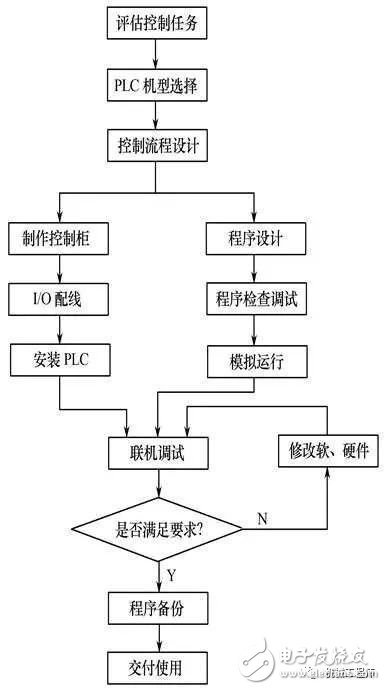PLC programmable controllers go through five distinct stages of learning, with each stage involving practical application. These stages build upon one another, gradually accumulating knowledge about the control system. Here are the five key stages in the technical learning process of a PLC control system.
**1. Logic Phase**
The logic phase involves understanding the basic logic design used in relay systems. This stage is foundational and requires a solid grasp of electrical drive concepts. In my view, the core of the relay system lies in the word "grab," which refers to how relays latch or hold their state. The three main components in a relay system are normally open (NO), normally closed (NC), and coils. These correspond to the basic elements in a PLC ladder diagram, but the way they are interpreted differs.
Unlike the relay system, where physical components operate simultaneously, the PLC uses a scanning cycle where all soft elements are processed by the CPU in sequence. This results in a time-based output, which is essential for the PLC’s operation. (For more details, refer to any standard PLC textbook.)
**Focus:**
- Learn electrical drive principles and understand NO, NC, and coils in the PLC ladder diagram.
- Be able to design simple control systems.
**2. Sequential Control Phase**
Sequential control is widely used in industrial applications, such as automatic machine tools. In PLC programming, this can be implemented using either sequence control instructions (like Mitsubishi’s STL) or a step-by-step control approach. Regardless of the method, the key is to define the system's context, which includes three main aspects: steps, active steps, and transition conditions.
**Focus:**
- Master system flowchart design.
- Understand the “start and stop†control mode and convert flowcharts into ladder diagrams.
- Be capable of designing general control systems.
**3. Assembly Phase**
This stage is significantly different from relay control and represents a major advancement in PLC functionality. It resembles assembly language programming in microcontrollers, where specific instructions like MOV (move) perform complex tasks. This stage requires a good understanding of computer basics, the internal resources of the PLC, and advanced instruction functions. Without this foundation, it's difficult to grasp how PLCs work at a deeper level.
For example, while a relay system deals with bits (like I0.0), the PLC also handles bytes (like IB0), which are not part of traditional logic design. The design approach here is fundamentally different from relay-based systems.
**Focus:**
- Develop a solid understanding of computer fundamentals.
- Learn about PLC resources and advanced instructions.
- Adapt to the programming style of microcontrollers.
- Be able to design complex control systems.
**4. Special Functions Stage**
This stage focuses on specialized systems such as motion control, PID temperature regulation, and network communication. Different PLC models offer various built-in features, while others may require expansion modules. To effectively use these, you must choose the right components based on your control needs. Additionally, knowledge of related automation technologies like servo drives and inverters is essential.
**Focus:**
- Understand system configuration requirements.
- Choose appropriate expansion units.
- Learn how to use extension modules.
- Be capable of designing specialized control systems.
**Note:** This stage often requires real-world experience and practical setup to fully master.
**5. Networking Stage**
With the advancement of automation technology, PLCs are increasingly used as lower-level devices that communicate with other systems. In this stage, you should learn communication protocols such as USS (used by Siemens), industrial Ethernet, and fieldbuses like PROFIBUS or AS-i. Communication between a PLC and an inverter, for instance, is a common application.
**Focus:**
- Learn different PLC communication protocols.
- Understand how to implement communication instructions.
- Be capable of designing networked control systems.
**General Design Flow of a PLC Control System**
The overall design process of a PLC control system is illustrated in Figure 1-1 below:

By progressing through these five stages, learners can develop a comprehensive understanding of PLCs and apply them to a wide range of industrial applications.
Energy Storage Product,Battery Storage Systems,Energy Storage Systems,Energy Storage Battery
Zhejiang Casnovo Materials Co., Ltd. , https://www.casnovonewenergy.com
